
Nanopool is a collective cryptocurrency mining pool operating since 2015, which is part of the Finom AG blockchain holding. Since the end of 2018, he has been a member of the three leaders in Ethereum mining.
Nanopool specializes in coins, which are mostly useful only on video cards. Currently supported mining is Ethereum (ETH), Ethereum Classic (ETC), ZCash (ZEC), Monero (XMR), Raven (RVN), Grin (GRIN) and Pascal (PASC).
The main features of Nanopool are the lack of user registration, the possibility of dual mining (simultaneous extraction of two coins), low commissions (1-2%, depending on the coin), as well as the use of the PPLNS system for the distribution of rewards between pool members.
- Nanopool Official Website
- How to Mine on Nanopool
- Rules for Mining in Nanopool
- Setting up Ethereum Mining (ETH) on Nanopool
- Nanopool Mining
- Nanopool Reviews
Nanopool Official Website
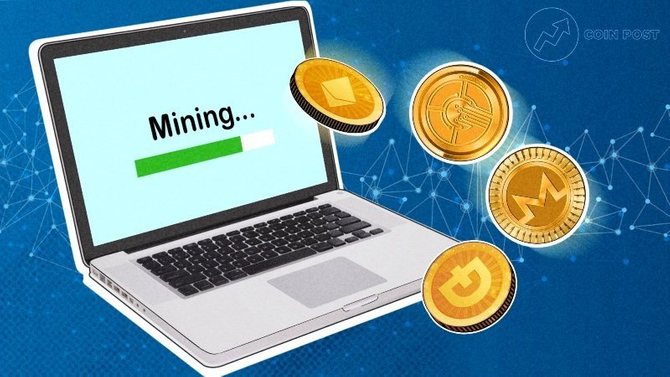
User interaction with Nanopool is via nanopool.org. There’s no familiar web interface on its homepage, and only brief information is displayed on all cryptocurrencies that Nanopul supports — hashrate, number of miners, coin value, withdrawal limits and mining algorithm.
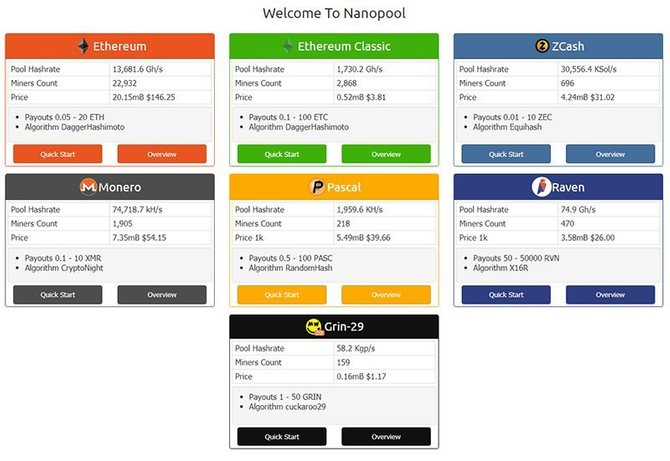
After that, the visitor enters the subdomain of the official Nanopool web resource dedicated to the extraction of this cryptocurrency.
You can also click on the “Quick start” link to see a list of steps that must be completed to quickly start mining. If you click on the “Start mining” button here, the already mentioned section of the site about mining the selected coin will load.
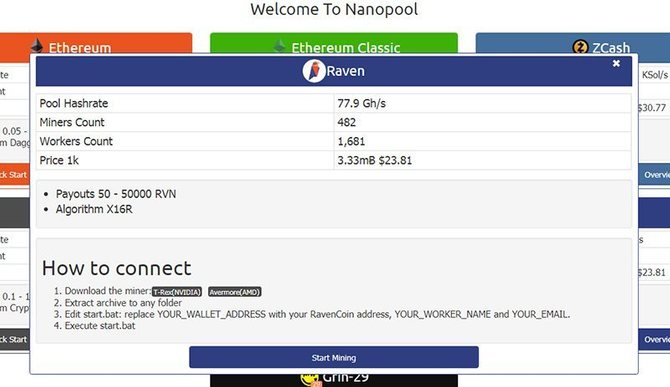
The page that opens with this displays:
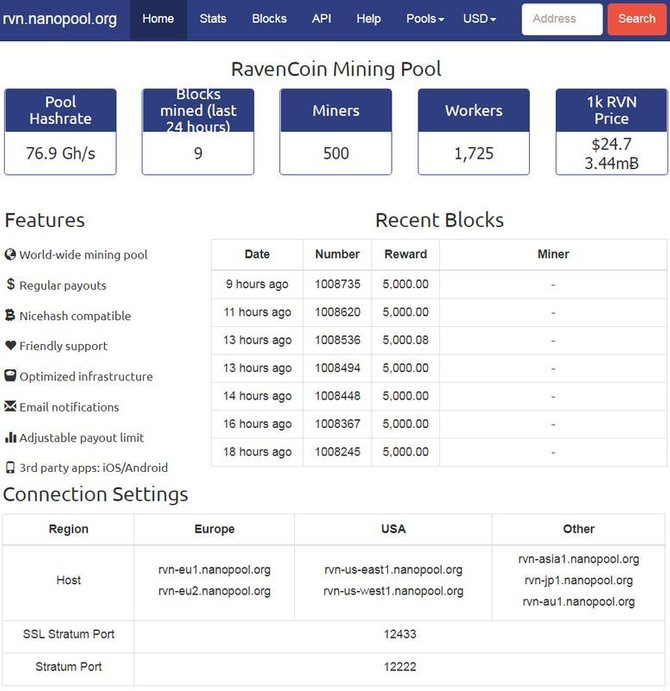
In addition, the heading of the Nanopool website has a main menu through which you can access infographics on the hash of the pool and network statistics (Stats), a complete list of Blocks found in the last 24 hours, API tools (API), information section (Help) and a list of other cryptocurrencies available for mining (Pools).
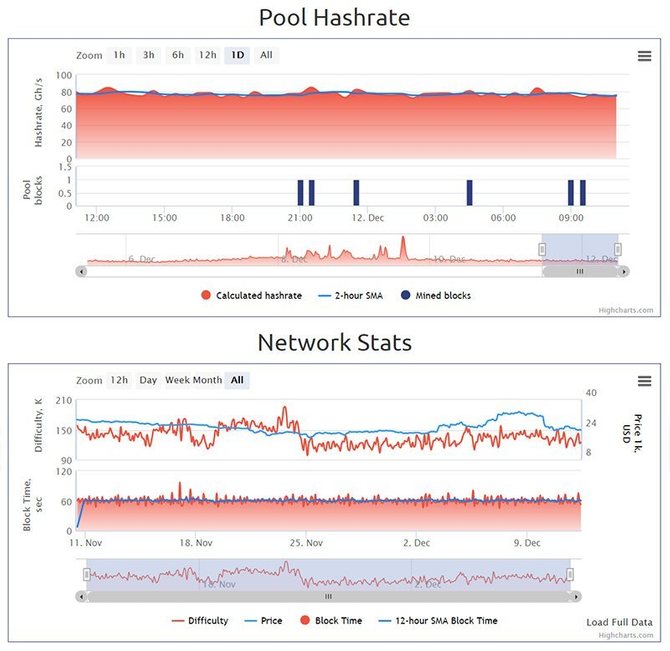
Also in the upper right corner there is a drop-down menu in which you can change the currency for displaying the coin price, and a search field for entering the address used for mining and viewing data on it.
Official Nanopool website
How to Mine on Nanopool

How to mine on Nanopool:
- Step 1. Go to the official Nanopool website.
- Step 2. Choose a coin for mining.
- Step 3. Download one of the software options supported by the pool.
- Step 4. Configure the configuration file in the folder with the downloaded software (server, port, wallet address, etc.) and run the executable (.exe or .bat) file.
- Step 5. You are ready for mining on Nanopool!
In more detail about everything that may be useful for starting mining through Nanopool, read the following review.
Having decided on the coin that you want to mine, you need to go to the "Help" section on its page. First of all, you need to familiarize yourself with the “Pool information” section, which contains general information about this pool for mining (commissions, payment system, server addresses, miner configuration).
Then it is recommended to study the contents of the Step by step guide page, from which you will find out that the computer or farm used for mining in Nanopool should have at least 3-4 GB of RAM and GPU memory, A 64-bit operating system (if Windows, then at least version 7) with updated GPU drivers, as well as a managed wallet in the blockchain of the extracted cryptocurrency.

For beginners in the field of mining and just wanting to fill in their knowledge gaps, the Knowledge Base section is available. You can also pay attention to the Coin information page, which contains a brief description of the coin and links to official resources on it.
In the "FAQ" section, users can find answers to the most common questions about the details of Nanopool, and in the "3rd party mining services" — descriptions and links to mining applications and third-party services.
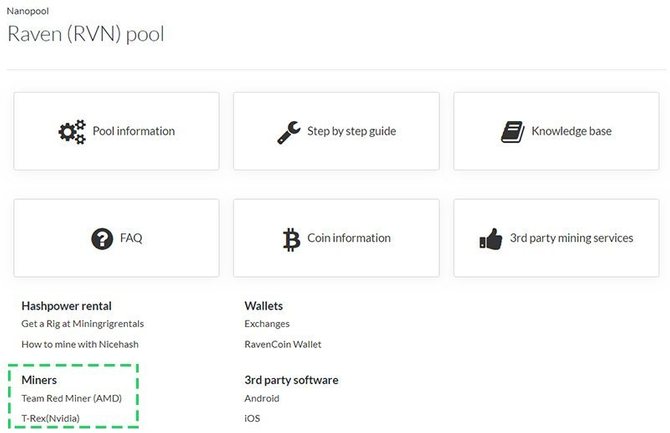
A little below the main blocks of the Help site section are links to information on the rental of computing power supported by wallets, Android and iOS applications and, most importantly, mining programs which can be used for production consideration cryptocurrency through Nanopool. If you click on the link with the name of one of them, a page with information on downloading and configuring this software will open.
Now, regarding the lack of user registration, Nanopool still has accounts, but they do not need to be created manually.
Another noteworthy point is that you can use computing power for mining in Nanopool, purchased, for example, through the NiceHash service (for mining any coin except Pascal).
Rules for Mining in Nanopool

Before you start cryptocurrency mining through Nanopool, it is recommended to study all the main points regarding the mining process and receiving payments.
Assortment of Mined Coins
Nanopool currently allows you to mine 7 cryptocurrencies based on different hashing algorithms:
- Ethereum (ETH) и Ethereum Classic (ETC) — Dagger Hashimoto (Ethash);
- ZCash (ZEC) — Equihash;
- Monero (XMR) — RandomX;
- Raven (RVN) — X16R;
- Grin (GRIN) — Cukaroo29;
- Pascal (PASC) — RandomHash.
Which coins are available in this case depends on the software used. For example, in Nanominer, pair mining is possible for Ethereum and Pascal.
Nanopool Commission
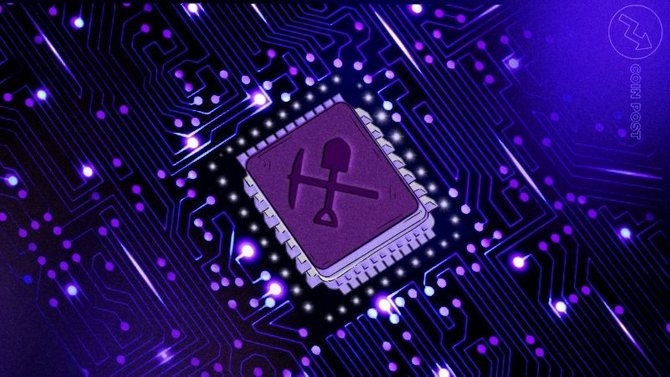
As in any other mining pool, Nanopool has a commission that is levied on the income of its users. It is 1% for all coins except Pascal — it has 2%.
It is also worth noting that most miner programs have their own commission fees, the size of which can vary from 1 to 5%, depending on the mining algorithm. However, they are in favor of software developers, not Nanopool.
Nanopool Payout System
Its essence is to receive rewards by users for each round of mining — the time interval between the pool finding the previous and the next new block. The duration of this process varies from 20 minutes to 6 hours (depending on the mined coin).
In this case, the size of the reward is distributed among the miners in proportion to, depending on the number of balls (valid hashes), they sent to Nanopool during the round.
Withdraw Funds From the Nanopool Website

!! The withdrawal of coins from the balance of the miner's account to his wallet is carried out in Nanopool automatically when the minimum payout is reached.
This limit is set by default by the Nanopool system, but if desired, it can be edited through the user account (instructions will be described in the next section), specifying any value within the boundaries defined by the pool. Moreover, for different cryptocurrencies, these values differ significantly:
- Ethereum — от 0,05 до 20 ETH;
- Ethereum Classic — от 0,1 до 100 ETC;
- Zcash — от 0,01 до 10 ZEC;
- Monero — от 0,1 до 10 XMR;
- Raven — от 50 до 50000 RVN;
- Pascal — от 0,5 до 100 Pascal;
- Grin — от 1 до 50 GRIN.
There is no clear payout schedule at Nanopool, but they occur in several stages throughout the day. As soon as the balance of the miner’s account exceeds the set minimum value, it will be paid when the next payment round occurs.
Setting up Ethereum Mining (ETH) on Nanopool
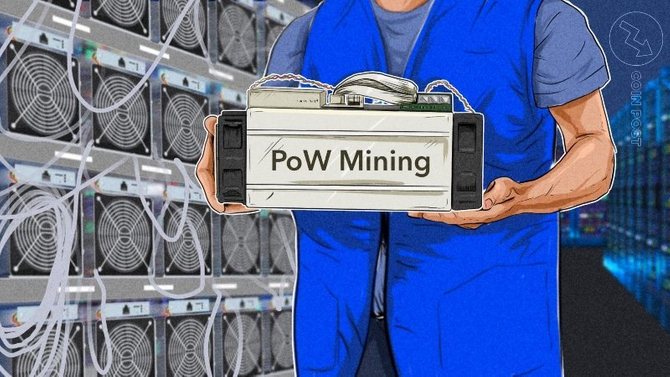
The most popular cryptocurrency among Nanopool users is Ethereum. Its extraction usually involves 4-5 times more miners than all other coins combined.
At the time of writing an article (December 2019), 23,000 workers provided a total hash of the Ethereum pool of 14,500 Gh / s, which allowed them to mine about 450 blocks per day. Therefore, it is precisely about the configuration of ETH mining in Nanopool that we will discuss in detail. But first, we recommend that you familiarize yourself with the details of Ethereum mining:
Select, Download and Install Software
You can use Nanominer, Claymore or Phoenix Miner miners to mine Ethereum through Nanopool.
Using his example, we will consider further processes for preparing for Ethereum mining on Nanopool.
To download the official version of the software, it is recommended:
- Visit the Help page in the Nanopool Ethereum Mining section of the site.
- At the very bottom of the tab that opens, click on the "Nanominer" link.
- On the page that appears, select “Download The Miner from GitHub”.
- Once on GitHub, initiate downloading the archive with the latest version of the miner, taking into account the OS used on the equipment (Linux or Windows).
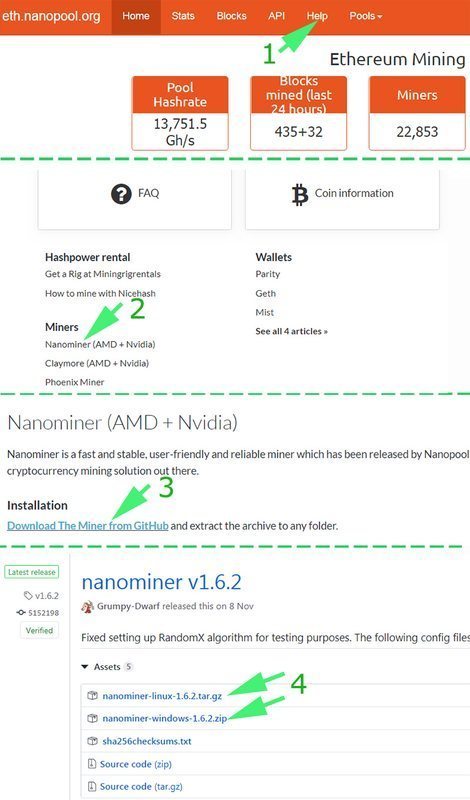
You do not need to install the downloaded software — you just need to unpack all Nanominer files from the archive to any folder.
Miner Configuration Under ETH
To configure Nanominer for Ethereum mining, you need to find the config.ini file in the directory with the unpacked software and open it for editing using Notepad. The settings that will allow you to quickly start mining ETH require a minimum — you just need to replace the existing text with the following lines:
[Ethash]
wallet = 0x123...
coin = ETH

You can also add optional lines to the settings file:
- rigName = TEST — instead of TEST, we indicate the desired name for rig (the device on which mining is performed);
- email = example@gmail.com — register your email address in order to receive notifications from the pool about stopping the rig for any reason.
The specified email will also be used to access the user account settings on the Nanopool website. If you do not want to receive notifications by e-mail, you can specify an arbitrary combination of characters instead of it, which will become the password for the user account.
The pool address in the settings does not need to be registered — Nanominer will automatically select one of the options available for Nanopools for a user-specified coin, depending on its geographical location.
A configuration file for Nanominer fully filled with the listed settings should look something like this:
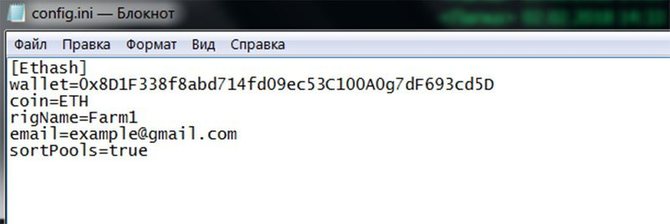
A wider list of all the possible options for this miner can be found in the README.md file in its official section on GitHub.
After making all the necessary settings, config.ini must be saved. Now you can start mining Ethereum by activating the executable file nanominer.exe.
This action will lead to the launch of the options prescribed in the miner settings, initialization of the GPUs available in the system, creating a DAG file for each of them and immediately starting the hash. The details of the described processes can be observed in the launched console window.

It is advisable to add it to the White List of your antivirus before starting the miner, since most of them regard mining programs as malicious and block their work.
On this, the user can leave his mining equipment alone and, if all the settings were made correctly, after a while, the coins earned through Nanopool will begin to arrive on his Ethereum wallet.
Work With Your Account Miner Ethereum
About half an hour after the start of the Ethereum mining process, Nanopool will receive the first balls from the miner and generate an account for it. To access it, in the “Address” line, enter the address of the wallet specified in the Nanominer settings and click “Search”.
On the page that appears, you can familiarize yourself with the user's statistics on his hashrate (current estimated, average for 6 hours and last reported), including in the form of a graph, as well as the balance of the account and a detailed list of the user's workers (rigs).
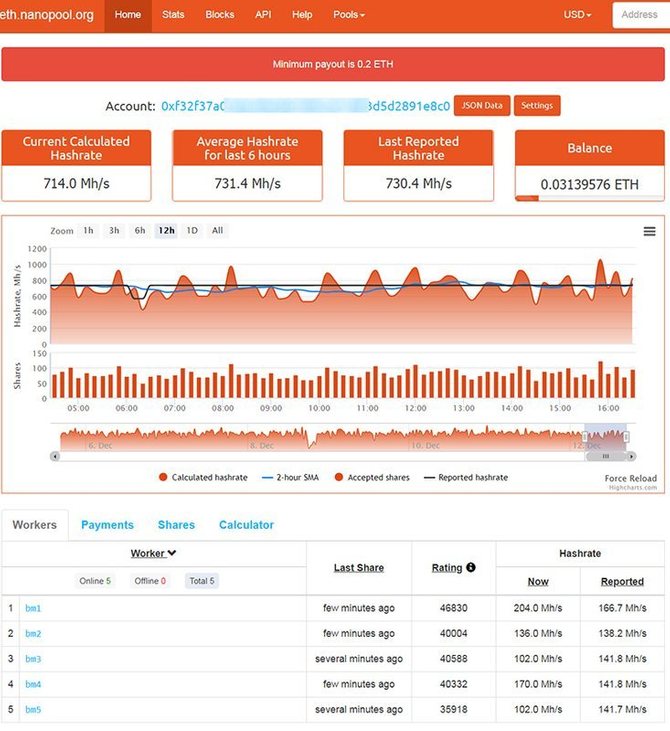
There are also tabs:
- Payments — with statistics on received payments;
- Shares — with reports on the balls received from the miner by the pool;
- Calculator — with rough estimates of the potential earnings of the miner.
In addition, at the very top of the page there is a line that indicates the current minimum payout size, and slightly below the account address and the Settings button.
To do this, you need to specify a password, a new minimum payout value and click “Apply changes”. In this case, the password is the content of the “email” field in the settings of the program for mining (it should be the same for all workers in the account).
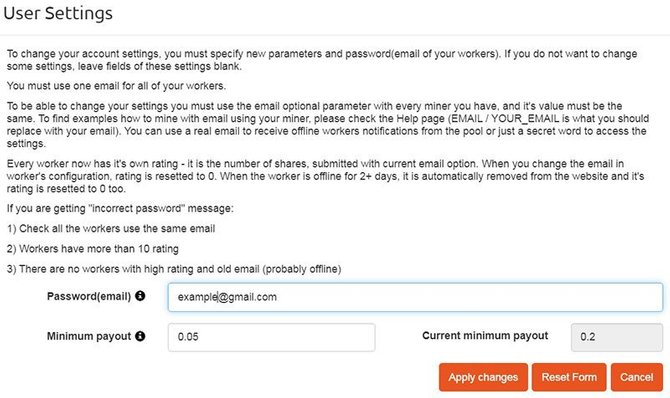
After saving the changes, payments from Nanopool will go to the miner's wallet when the specified balance is reached. We also recommend that you watch a detailed video about Ethereum mining in Nanopool and setting up equipment:
Nanopool Mining

The process of mining other cryptocurrencies through Nanopool is generally similar to the Ethereum mining described.
In the «Help» section of the site, you can view the list of miners and the nuances of their settings for Nanopool, in which there are separate tabs for each of the 7 cryptocurrencies available for mining. The main difference is the software used — each coin has its own set of supported options.
ZCash (ZEC)
ZEC mining through Nanopul has a significantly smaller number of miners than in the case of Ethereum — at the time of writing an article, there were about 700 of them. As a result, the total pool hashrate involved in ZCash mining is also very modest — a little more than 30,000 KSol / s, which is enough to find only 7-8 blocks per day.
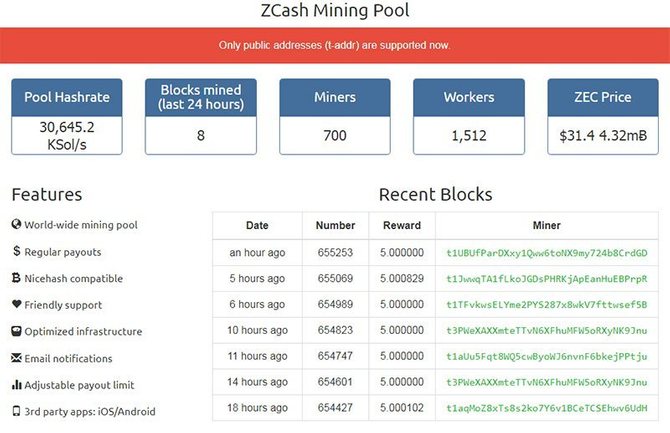
For ZCash mining, rigs with at least 3 GB of GPU memory can be used, however ASIC miners working with the Equihash algorithm are more efficient. When using the last, mining settings will look like this:
URL: zec-eu1.nanopool.org:6666 (or any other Nanopool server)
Worker: WALLET.WORKER_NAME / EMAIL
Password: YOUR PASSWORD
For systems with Nvidia graphics cards, you can use the EBWF miner, and for AMD — Claymore.
The Nanopool commission for the extraction of this cryptocurrency is 1%, but it is completely absent when paying funds to the miner's wallet. By default, withdrawal occurs when crediting 0.01 ZEC to the account balance, but this limit can be increased by the user to 20 coins.
Monero (XMR) on Nanopool
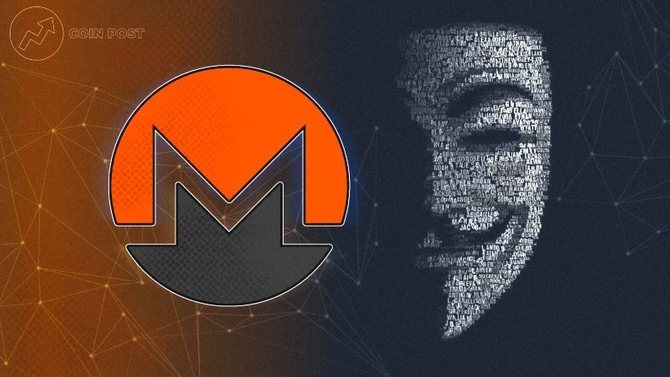
Monero mining at Nanopool is more popular — in 3rd place after ETH and ETC. Almost 1900 miners are engaged in it, providing the pool with a total hashrate of 77,000 kH / s, which is enough to produce about 60 blocks per day.
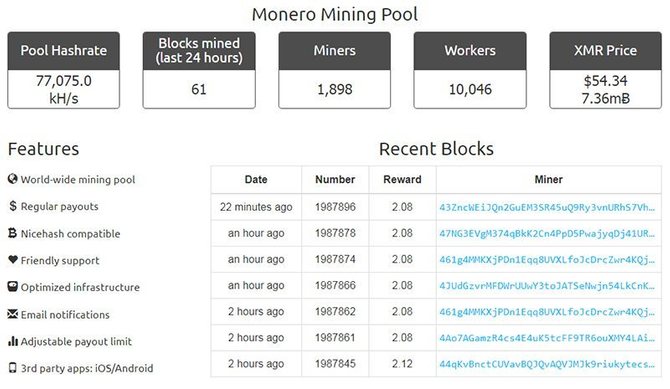
Recently (since November 30, 2019), mining of Monero in Nanopool takes place on the RandomX algorithm. Nanopool supports three miner programs working with different types of equipment — Xmrig (GPU), XMR-Stak RX (GPU + CPU) и Nanominer (только CPU). When using the latter, you need to insert just a few lines with your data into the config.ini file to configure the application for yourself:
[RandomX]
wallet = YOUR_XMR_WALLET
rigName = RIG_NAME
email = YOUR POST (it’s the same password for changing the payout limit)
There will also be a minimum of settings for the Xmrig miner — open the config.json file for editing and replace all the lines it contains
"YOUR_XMR_ADDRESS.YOUR_WORKER / YOUR_EMAIL" to your data ("WALLET_ADDRESS.WORKER_NAME / MAIL ADDRESS").
But when choosing the XMR-Stak RX program with the settings you will have to tinker a bit — it will need to be entered manually in the console window (paste using CTRL + V or the context menu does not work), which is launched using the xmr-stak-rx.exe file. All parameters that need to be specified are shown in the screenshot below.
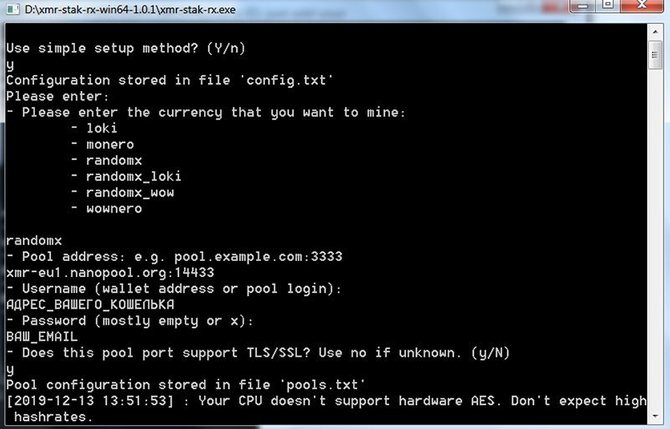
For the opportunity to mine Monero in Nanopool you will have to pay a commission of 1% of the rewards. In addition, a small service charge is present when withdrawing funds to the user's wallet — 0.0001 XMR. By default, the minimum payout is 1 XMR, but the miner can change it to any value ranging from 0.01 to 10 XMR.
Nanopool Reviews

Judging by the bulk of the reviews that can be found on the network, Nanopool is a fairly reliable pool that regularly pays the earned money to the miners.
Some consider the presence of the site’s interface in English only a small drawback of Nanopool, which can be put up with, due to its simplicity and convenience. Low commissions are also mentioned compared to other pools.
Frankly negative reviews could not be found on Nanopool — in some places there are comments regarding a temporary drop in profitability, but this is more an exception to the rule than a pattern.
In general, the popularity of Nanopul can be explained by its user privacy policy (he does not need personal data of miners), the minimum settings necessary to start mining, a fair reward distribution system and, of course, the absence of problems with payments.
Nicehash: Download, Calculator, Settings, Reviews
MinerGate: Registration, Configuration, Withdrawal, Reviews
Cloud Mining: Where to Start and How to Avoid Becoming a Victim of Scam